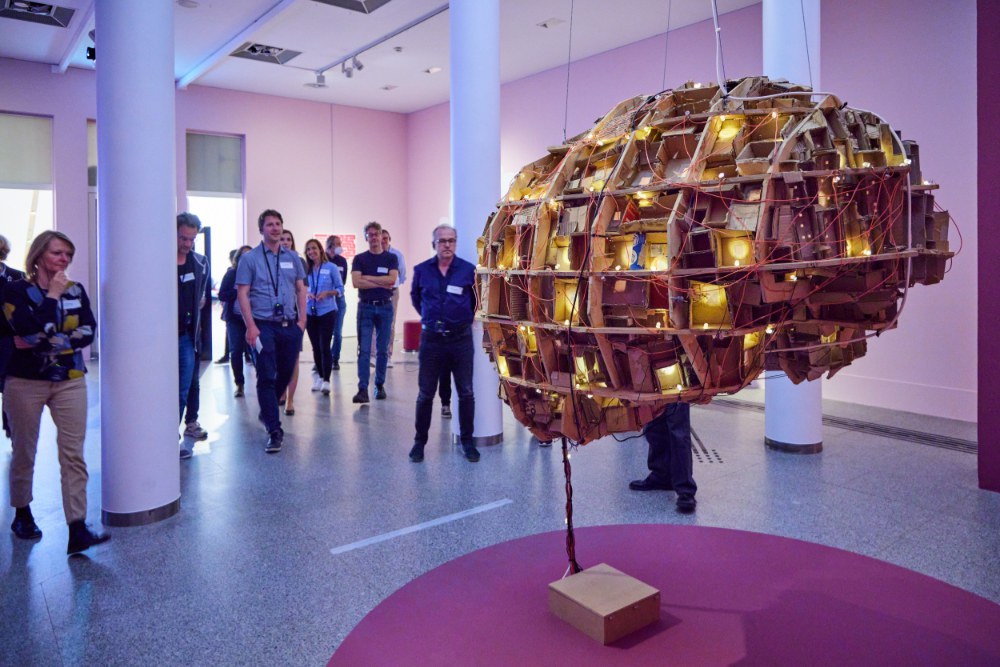In many areas of the life sciences, chemistry and physics play a role and vice versa - for example, when it comes to developing detectors for diagnostic imaging or synthesizing chemical compounds for their use in imaging or drug development. The various disciplines also come together in so-called biohybrid research, when technology and nature combine.
But how do researchers from very different fields get to know each other at all? The two Transdisciplinary Research Areas (TRA) "Matter" and "Life and Health" now demonstrated one possible way and brought their members together at an exceptional networking event. 27 researchers did not miss the invitation and visited the current exhibition "Das Gehirn in Kunst und Wissenschaft“ (The Brain in Art and Science) at the Bundeskunsthalle. Afterwards, they presented their research focuses in a one-minute flash talk and discussed in randomly assembled small groups. "After the constraints of the pandemic, everyone felt a great need to see each other live and exchange ideas," says Dr. Meike Brömer, manager of the Transdisciplinary Research Area "Life and Health," who organized the event together with her colleague Dr. Birgit Westernströer from TRA "Matter."
The participants came equally from both Transdisciplinary Research Areas. Physicists, chemists, immunologists, neuroscientists, physicians and pharmacists, among others, met. “There were also a few new professors who were able to use the event to network within their TRA," says Meike Brömer. This way, not only new contacts between the two Transdisciplinary Research Areas were established, but also within a TRA.
One of the newly identified research topics is the use and handling of big data in different disciplines. "We are thinking about further events to explore this topic in more depth," says Birgit Westernströer. Further exchange meetings on other identified topics are also being planned. "We will increasingly promote network formats and thereby establish different constellations with other Transdisciplinary Research Areas," Meike Brömer sums up.
“This was not the first cooperation between the TRAs ,Matter’ and ,Life and Health’,” says Birgit Westernströer. A research prize has already been established to promote joint research projects between scientists from the two areas.

















